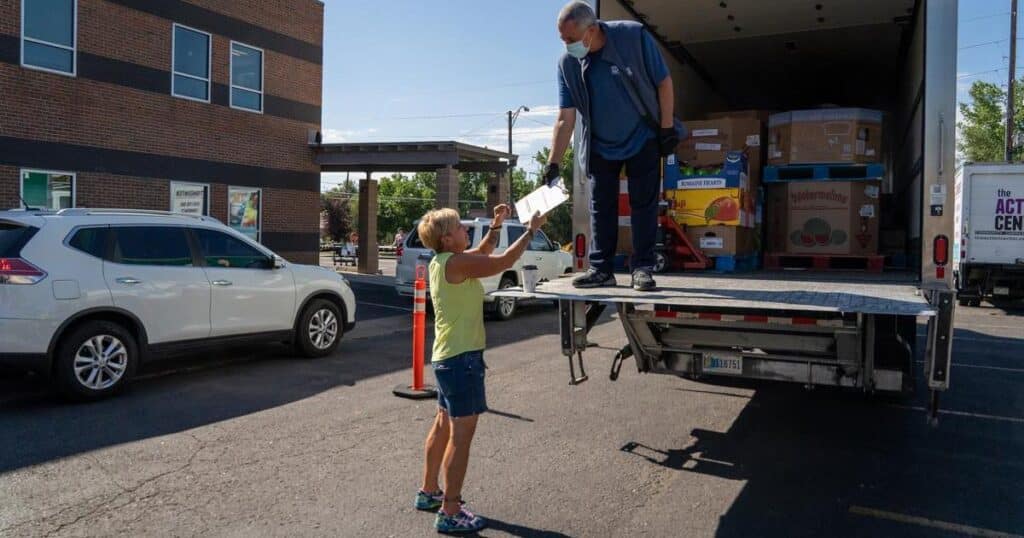
While the terms are sometimes used interchangeably, the truth of the matter is that food banks and food pantries are actually different types of organizations that both play a pivotal role in helping relieve hunger. The confusion around these terms can stem from the fact that food banks and food pantries often work hand-in-hand to help answer the challenge of hunger. To learn more, we’ll explore how food banks work and how food pantries work below!
How does a food bank work?
Food banks, such as Food Bank of Wyoming, are nonprofit organizations that often operate large-scale warehouse facilities which serve as storage and distribution hubs for food donations. The larger size of food banks allows them to receive, process, and distribute donations of any size, from a small donation of canned goods to truckloads of donations from a local grocery store chain.
Just like their financial namesake, food banks are experts at safe storage for the short time food stays at their distribution centers before being distributed to people facing hunger. Their facilities are designed to keep perishable donations in peak condition until they’re ready to feed families experiencing hunger, and are equipped with extensive, commercial-grade refrigerators and freezers to help maintain freshness.
The larger size and reach of food banks also come into play in the sourcing and solicitation of donations. Food banks often partner with a large and varied network of sources, such as farms, factories, grocery stores, and restaurants, and their additional “people power” from employees and volunteers helps them constantly search for new sources. Food banks are also able to use their purchasing power to buy supplies and food in bulk at a far lower cost than the average person could purchase them in a store, allowing them to meet needs that aren’t being covered by large- and- small-scale donations or government commodities.
Food banks have the capability to provide other organizations with supplies, as well as distribute food directly to communities in need. Food Bank of Wyoming operates direct programs, delivering food and other goods to our neighbors via our Food for Kids programs, our FRESH Program, the Culturally Responsive Food Initiative, Mobile Pantries, and home delivery services for older adults in Natrona County.
How does a food pantry work?
Food pantries, also known as food shelves, are food distribution centers that receive food and other goods (often from food banks) and supply them to their communities. Food pantries serve as the many intertwining branches of the tree of food relief, firmly enmeshed in the unique needs of their respective neighborhoods and clients.
Food pantries take on a wide variety of different shapes and sizes in order to make food access as convenient as possible for the people they serve. A food pantry may look like a small meal kit drop site at a local school, a weekly church group food share, or a grocery convenience market operated by a nonprofit organization. Some food pantries make direct deliveries to households and offer additional wrap around services like career counseling or wellness checks.
How do food banks and food pantries work together?
Food Bank of Wyoming teams up with over 150 Hunger Relief Partners (food pantries) across the region, leveraging the efficiency of our scale as a food bank to provide supplies for pantries that are deeply engaged with the communities that they serve.
As part of our mission to assist food pantries with the critical work they do to serve their communities, Food Bank of Wyoming makes it as easy as possible for our partners to access the supplies they need. One way we do this is by distributing fresh produce, bread, and donated product to our partners at no cost. This results in millions of pounds of fresh fruits, vegetables, and other items being distributed to our partners every year, free of charge, allowing our Hunger Relief Partners to use their budgets more effectively in other areas.
Food banks and food pantries both have a critical role to play in answering the challenge of hunger in our communities. When you make a gift to Food Bank of Wyoming, you can rest assured that we will maximize the value of your donated funds (or time volunteering!), and use it to support our Hunger Relief Partners and the neighbors they serve however we can.



